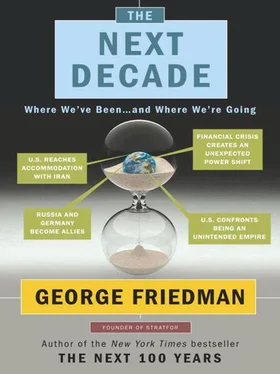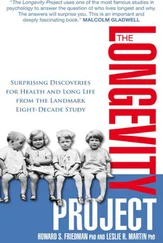The attacks of September 11 were only marginally about the United States, and the exact nature of the American response to Bin Laden’s gambit mattered little, because any response could be used to his advantage. If the Americans did nothing, this would confirm their weakness. If the Americans responded aggressively, this would confirm that they were indeed the enemies of Islam.
But while the attacks were aimed primarily at the Muslim psyche, the psychological impact on Americans turned out to be hugely important. The unexpectedness of the attacks, the fact that they were mounted using a fixture of everyday life—commercial airliners—and the fact that casualties were substantial created a sense of panic. How many other teams were in place? Where would al Qaeda strike next? Did al Qaeda possess weapons of mass destruction? Even more than in the wake of Pearl Harbor, Americans emerged from the shock of September 11 with a sense of personal dread. The possibility that they and their loved ones might be killed next was very real to them. This was a pervasive and profound sense of unease that the government had to address by appearing to take decisive action.
The psychological alarms that went off among the American people served to compound the strategic problem facing the U.S. government. Al Qaeda by itself—unless it did possess weapons of mass destruction—did not pose a genuine strategic threat. It could not shatter the United States. However, if the disruption it initiated had the desired effect in the Islamic world and regimes that were linked to the United States started to fall, ultimately that would have a huge impact on American strategy. If the Egyptian government were overthrown, for example, the position of Israel would change and an American anchor in the region would be threatened. If the Saudi government was endangered, the flow of oil from the region might be interrupted. The strategic danger was not the destruction of America’s population centers, economic infrastructure, or military might, but simply al Qaeda’s potential political success in the region—and that quite apart from Bin Laden’s distant dream of the caliphate.
The United States as well as al Qaeda identified the strategic battlefield clearly: the hearts and minds of Muslims. But for the president it was American hearts and minds that first needed to be calmed and reassured that actions were being taken to protect the homeland. The FBI moved aggressively to track down anyone even remotely suspected of being associated with al Qaeda, and security was revamped at airports, but neither effort was particularly effective at the time. In many ways, the United States continues to operate under the doctrine of putting enormous resources into security measures of limited effectiveness in order to calm the American public’s legitimate fears. Reconciling resources with operational reality and public perception will be a critical task for the next decade.
The assault on America’s sense of well-being also demanded that al Qaeda’s leaders be captured or killed. In strategic terms this was a questionable priority, but a president must satisfy not only the desire for reassurance but also the desire for revenge. Here the challenge was compounded by the fact that al Qaeda is a sparse network spread out around the globe, operating without a central headquarters or a conventional chain of command. Al Qaeda encourages sympathizers to strike out on their own and innovate. So while it is possible to carry out acts of retribution against these terrorists, it is impossible to actually destroy al Qaeda, because it isn’t an organization in any conventional sense. Because there is no infrastructure and no chain of command, there is no real head to be decapitated.
What did make strategic sense was a minimal infusion of force to disrupt al Qaeda’s planning, training, and limited command capabilities. Al Qaeda considered itself safe while operating out of Afghanistan, a landlocked country with no ports of entry. Bin Laden and his colleagues had some familiarity with American operations, both from observing Operation Desert Storm in 1991 and from training with Americans in Afghanistan during the Soviet-Afghan war of the 1980s. Desert Storm in particular had showed al Qaeda that even when ports were available, Americans planned obsessively, and planning took time. With winter approaching, al Qaeda’s rational estimate was that even if the United States chose to go looking for them in Afghanistan, no action was possible before the spring. The Pakistani port of Karachi would be essential for an invasion, and negotiations for its use might delay an assault even longer.
The Bush administration, however, calculated that it couldn’t wait until spring. The president really did want to decapitate or at least disrupt al Qaeda, but politically he had to respond to demands for an immediate and highly visible response. The attacks had shaken confidence in America’s defenses, and the president had to rebuild that confidence while also building a political base for what could be an extended war. He could ill afford a crisis in confidence about American prosperity at this juncture, so it was in this atmosphere that the war on terror began to affect economic decisions as well. If it took six months to launch American counteraction, the already tenuous political situation would deteriorate, and the president would lose support for the effort even before it was launched. Bush’s decision to go ahead was one of those individual judgments that can and do affect the lives of millions over the span of a decade, and certainly the fallout from that decision will continue to color much of the decade to come.
There was also a legitimate strategic reason for haste: the United States wanted to make certain that regimes in the Middle East didn’t fall, or even begin to recalculate their interests. While the United States might have been perceived as a great power, it also was seen as a power that was unprepared to risk a great deal in the region. Ronald Reagan’s decision to withdraw from Beirut after the bombing of the Marine barracks, George H. W. Bush’s decision not to go on to Baghdad after liberating Kuwait, and Bill Clinton’s decision to withdraw from Somalia, followed by his rather anemic response to pre-9/11 al Qaeda attacks, all created an image of a country unwilling to take risks and suffer losses. Meanwhile, Muslim governments saw the very real possibility of being toppled by political unrest fomented by al Qaeda’s capable and ruthless covert force, particularly if they collaborated with the United States.
These governments were not about to become jihadists, but neither were they prepared to expose themselves on behalf of the United States. They expected the United States to continue its policy of limited risk taking, so for them, cooperation with the U.S. appeared to pose serious risks with few advantages. The Americans demanded intelligence sharing on al Qaeda, for instance, but these governments, which did not expect the United States to stand by them for the long haul, were reluctant to participate. The longer the United States failed to act, the lower the Muslim countries’ propensity to assist.
Al Qaeda miscalculated by focusing too much on the consequences of the attack for the Islamic world and not enough on the political and strategic pressures September 11 created for Bush. There was no doubt that the United States would act aggressively, and for the reasons cited above, sooner rather than later. The target had to be al Qaeda, which meant that the area of operations had to be Afghanistan.
In mid-September 2001, the United States sent in CIA operatives to make deals with local Afghan warlords. At the same time, the United States dispatched Special Operations Forces and paramilitary CIA units to fight alongside anti-Taliban Afghans and to target American air strikes on Taliban positions. In particular, the United States made a deal with the Northern Alliance, a Russian-backed group of anti-Taliban organizations. Having been defeated by the Taliban in their civil war in the 1990s, the Northern Alliance now welcomed the opportunity to strike back, and the Russians had no objection. Other warlords were simply bought. The United States also had the active cooperation of Iran.
Читать дальше












